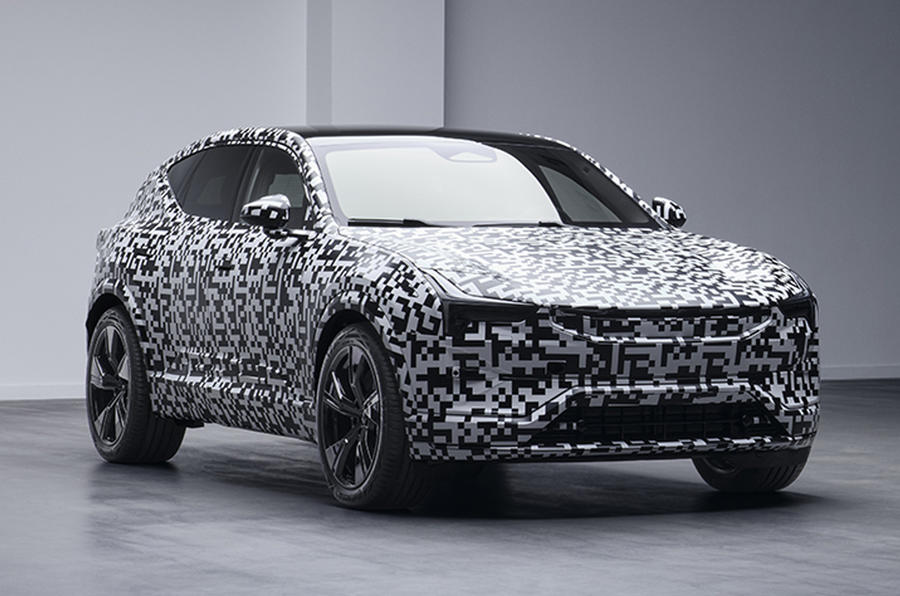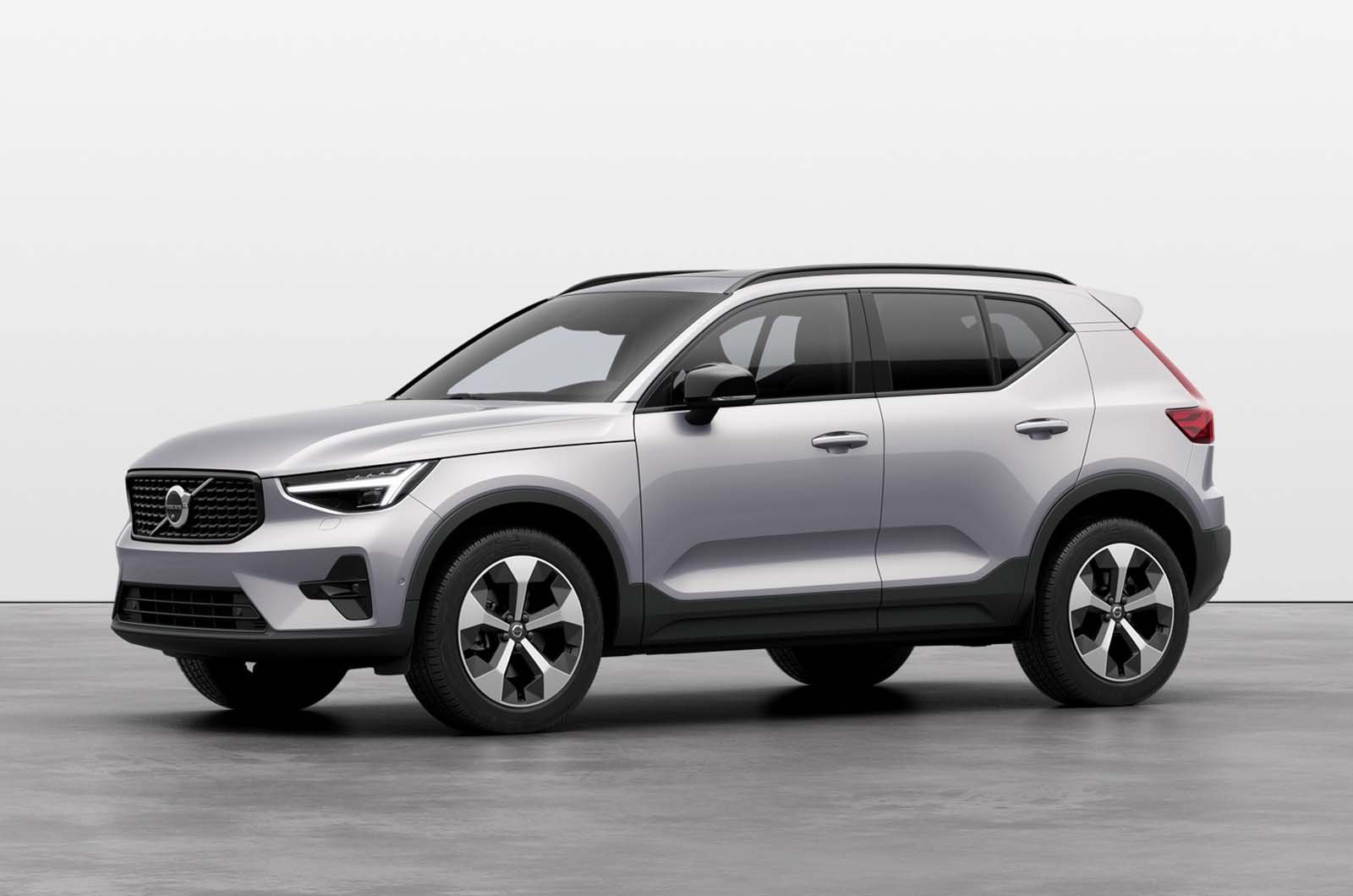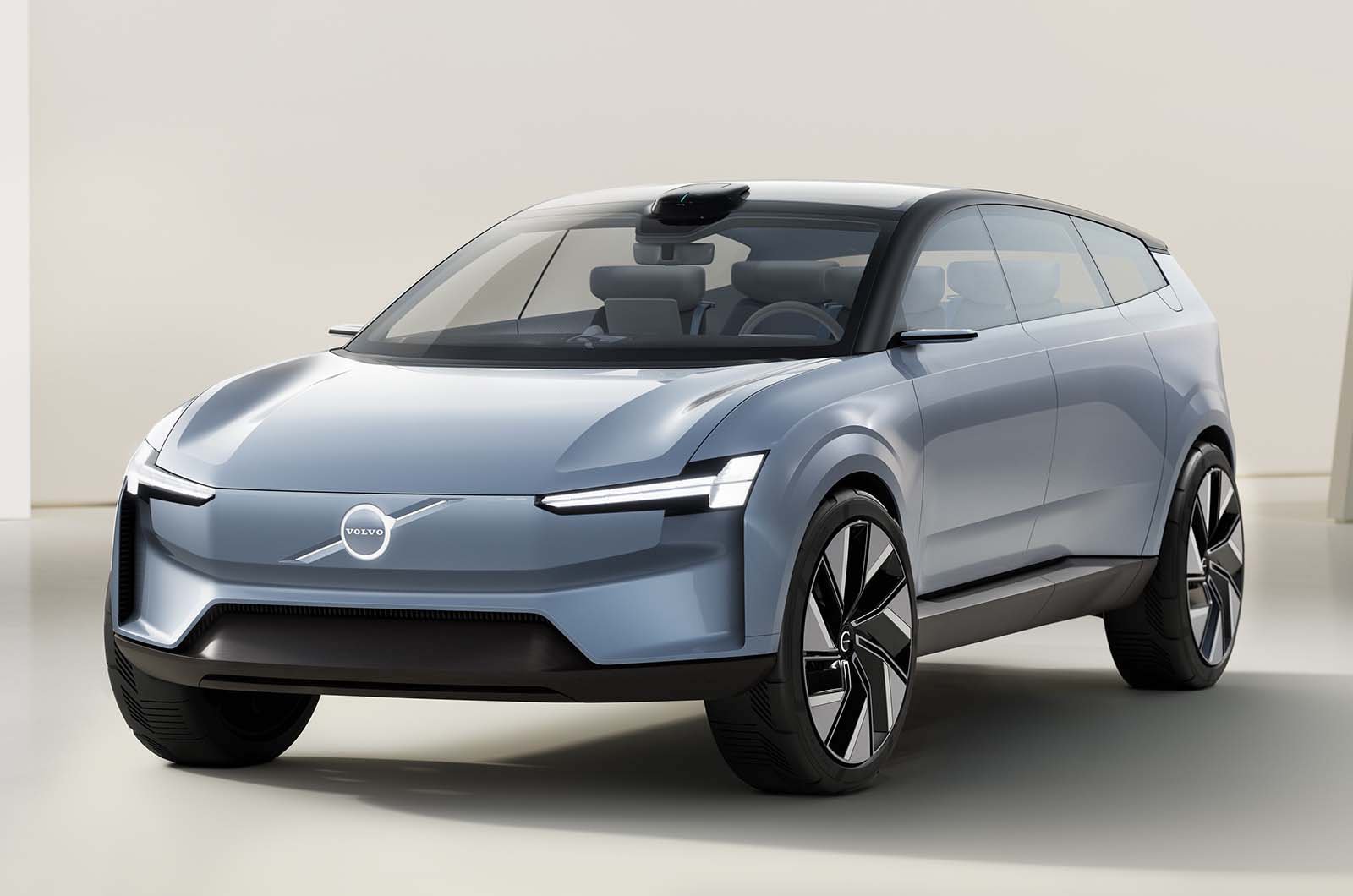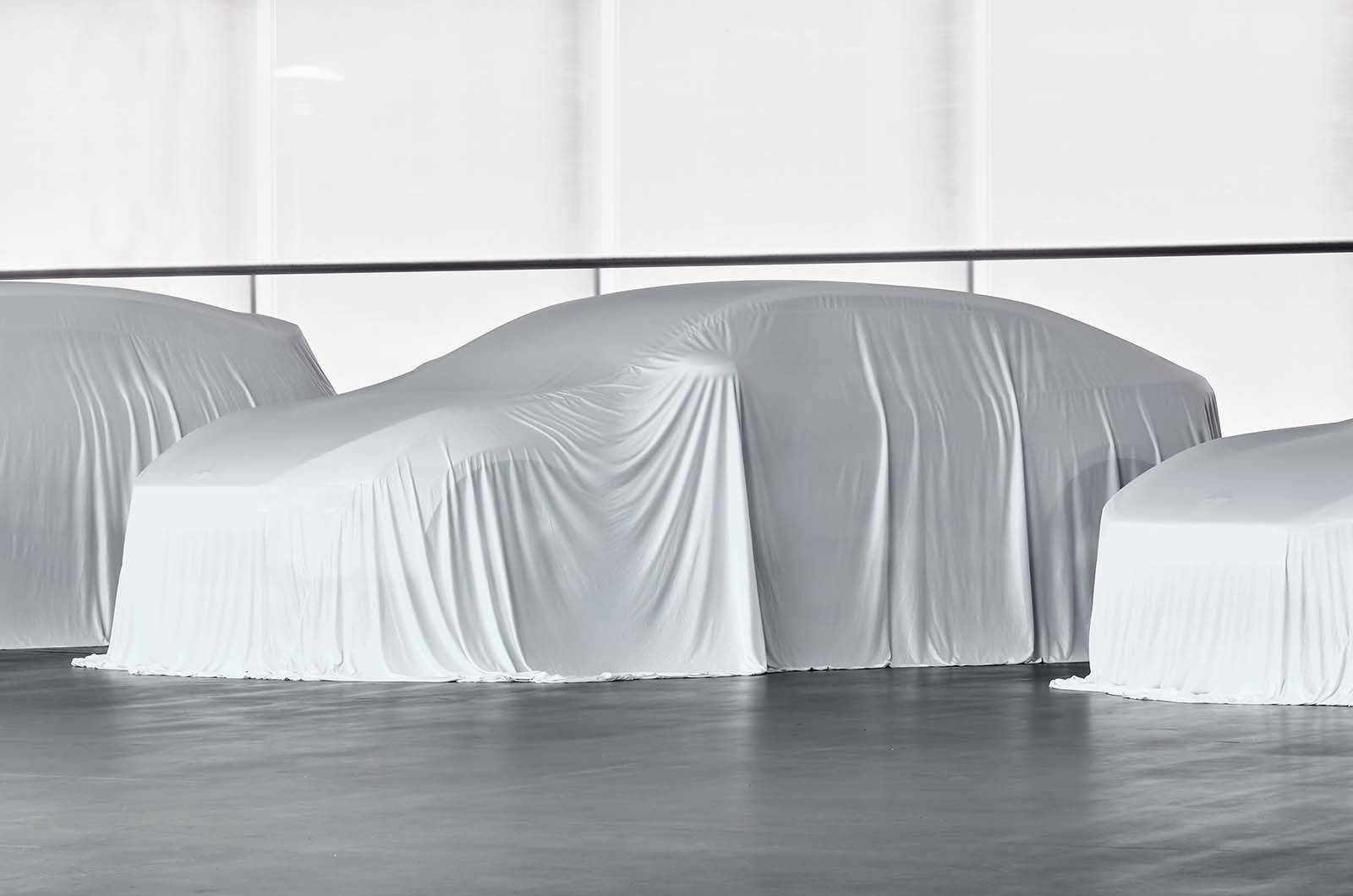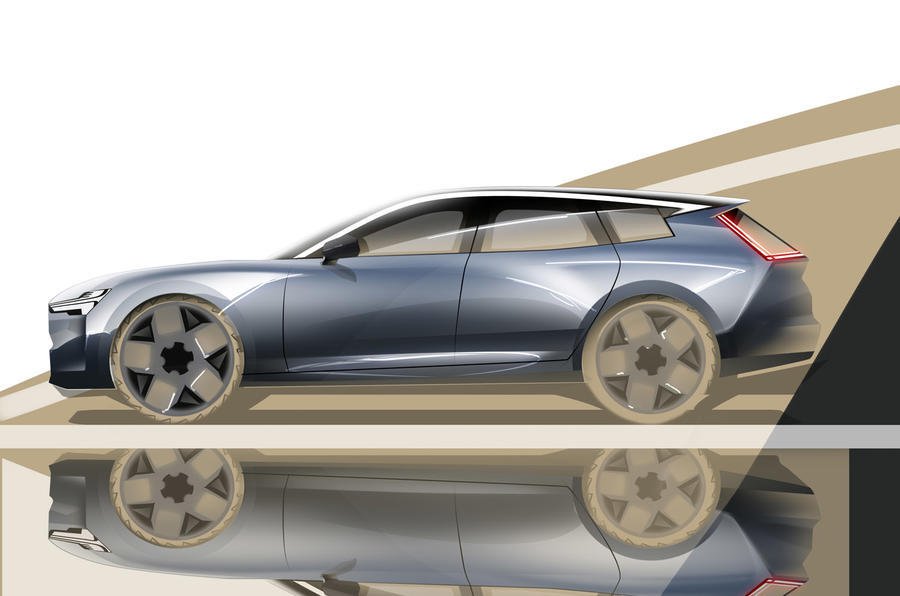Volvo and Polestar are planning to introduce seven new electrified models over the next three years. Here’s a full run-down on them.
Ever since Volvo’s reinvention in 2015, sales have been increasing. It’s now one of the best-selling premium brands in Europe and has been on the move in Australia with sales growing by over 15 per cent last year.
Along with its all-electric sister brand Polestar, Volvo is pressing ahead in areas such as electrification, self-driving technology and safety. The Swedish manufacturer is also challenging the way people pay for their cars, with a subscription service in some countries that charges a monthly fee for new models.
Here are the new cars and concepts coming from Volvo and Polestar.
2022 Polestar O2 Concept
Over the next five years, Volvo is planning to bring at least four new models to market. In addition, there will be three new models from Polestar. To kick things off, it has just unveiled the Polestar O2 concept – a hard-top convertible electric sports car.
Unfortunately, the O2 is unlikely to reach production anytime soon. Instead, it’s intended to demonstrate how Polestar’s design style can be applied to different classes of cars, and showcase what the brand is capable of creating. We can also expect the O2’s influence to filter over to Volvo’s new models, too.
2022 Volvo XC40 facelift
On sale spring 2022 (Australia)
Volvo has secretly given its XC40 family SUV a facelift, and unveiled it on its website configurator in Europe. That’s surprising because car manufacturers usually run a public relations campaign to promote a car.
The reason for this is because the updates are subtle. Up front, the XC40 now has a look similar to the Volvo C40 Recharge electric SUV, with more streamlined ‘Thor’s Hammer’ LED headlights and a reworked lower bumper. New wheel designs are available as part of the update.
Inside, changes are minimal, but the Sensus infotainment system has been updated with a new Google-designed Android-based system. The new system has already been rolled out in the updated S90, V90, V90 Cross Country and XC60 models. The XC40 has also received an updated digital driver’s display.
The engine line-up for the XC40 remains largely unchanged, with B3 and B4 mild hybrids featuring 2.0-litre petrol engines. The T4 and T5 Recharge plug-in hybrids remain, and an entry-level T2 has been added to the range with a 95kW 1.5-litre three-cylinder petrol engine. The fully electric Recharge model also remains, still with an official range of 414km, which is slightly less than the official 459km of the BMW iX3. Price and specification for Australia are yet to be announced.
Polestar 3
Launching in 2023
The Polestar naming strategy is a fairly simple one: the company’s first car was called the Polestar 1, the second the Polestar 2, and the third? Yep, it’s the Polestar 3.
While it’s the company’s third car, the 3 will be its first SUV – and will take a more sporting approach to the luxury SUV brief than the more comfort-oriented next-generation Volvo XC90, which it will be based on.
Late in 2021, Polestar released a teaser image of the 3, giving a subtle hint to its look, although we have our own rendering of it above. Up front, it will have a front-end design similar to that of the Precept Concept, with a smaller, closed-off grille and a reinvention of Volvo’s LED headlight design.
Inside, we can expect an interior similar to that of the Polestar 2 – which features an Android-based portrait infotainment screen. It should be more luxurious than the 2, and sustainably-sourced materials and fabrics are likely to be widespread. The 3 is expected to stick with a five-seat set-up to distance itself from the XC90, which will get seven seats.
There’s little information about the technical specifications, but we can expect the 3 to have a battery size in the region of 100kWh and a range of up to 480km. That would be slightly higher than rivals including the Audi E-tron, which has an official range of up to 405km. As an electric SUV with a sporty focus, performance should also be impressive, with a sub-4.0 sec 0-100km/h time.
Volvo Embla (XC90 replacement)
Launching in 2023
What’s ‘Embla’, you might ask? Well, Embla is the rumoured name for the fully electric replacement for the Volvo XC90 – the company’s flagship seven-seat luxury SUV.
Having used an alphanumeric naming strategy for much of its recent history, Volvo is now looking to move to a new naming structure as it transitions to electrification. Embla was also the name of the first woman in Norse mythology – which hints that it will be the first of a new era of electric Volvos.
The styling of the Embla is expected to be heavily influenced by the Volvo Concept Recharge (pictured above), which first arrived in 2021. As a result, it’s likely the Embla will feature a sharply raked windscreen, a blanked off body-coloured grille, and a slim LED headlight design.
The overall shape will be much lower and more squat than the current XC90, no doubt for aerodynamic purposes. This was further confirmed by company CEO Håkan Samuelsson, who recently suggested that Volvos “will be less boxy” in the future.
Interior space will be emphasised, particularly because of the glassy-nature of the Concept Recharge. Having been designed as an electric car from the ground up, the Embla will have no need to mould its interior around an engine, gearbox and exhaust system. Instead, it will only have much smaller electric motors to cater for, so it should be much more spacious inside for all seven passengers than the current XC90.
Design-wise, the interior will be very minimalist and trimmed in sustainable and natural materials. The main attraction will be the central screen, which will house Volvo’s latest Android-based infotainment system. As with Volvo’s current infotainment and climate control set-up, it’s likely the Embla will retain most of its interior functions via the central touchscreen.
The most revolutionary part of the Embla will be a new in-house-designed vehicle software system known as VolvoCars.OS. This will include all the car’s computers and control units, making it much easier to keep the car up-to-date. It will also allow Volvo to update the car with the latest semi-autonomous driving assistance tech, which the Embla is due to feature.
Under the skin, the Embla will be very closely related to the Polestar 3, and as a result it will likely have a similar battery size, in the region of 100kWh. Range will be in the region of 480km, and as it stands, there are no direct seven-seat electric SUV rivals other than the Mercedes-Benz EQB, which has an official range of up to 414km.
Polestar 4
Launching late 2023
Polestar’s fourth car will be the Polestar 4 – and despite having a larger number in its name, it will actually be slightly smaller than the Polestar 3.
Set to rival the upcoming fully electric Porsche Macan and the Audi Q6 e-tron, the Polestar 4 will be the company’s second and smallest SUV. Teaser images from Polestar reveal a coupe-style design with a long and low silhouette, and up-front styling looks to be similar to that of the Precept concept.
Inside, the 4 will have a Polestar 2-inspired interior with a portrait-oriented touchscreen taking centre stage. It will be slightly less luxurious than the larger Polestar 3, but is still expected to feature plenty of sustainably sourced materials.
As an electric SUV with a sporty focus, the Polestar 3 is likely to have a swift 0-100km/h time in the region of 4.0sec, which would rival the Kia EV6 GT, with its 3.5sec time. Battery size will be in the region of 80kWh and range should be around 480km, which would rival the Jaguar I-Pace (470km officially).
Polestar 5
Launching in 2024
The flagship car in the Polestar range will arrive in the form of the Polestar 5 – a four-door performance car to rival the Porsche Taycan, Audi E-tron GT and Tesla Model S.
The 5 will be the first car in the Polestar line-up to be completely bespoke to the company, rather than using Volvo underpinnings. That means its engineers will be able to throw everything they’ve got at it, with Polestar saying it’ll have “supercar levels” of performance and handling.
Styling-wise, the 5 will be heavily influenced (if not identical) to the Polestar Precept concept, which was first revealed in 2020. That means it will feature a sleek fastback body with a long, glass roof and strong rear haunches. The front end will also be very low for aerodynamic purposes, and around the back, an LED light bar will spread across the width of the rear end.
The interior of the 5 will also be very similar to that of the Precept – which means it will be mostly minimalist and button-free, and filled with eco-friendly materials. All the main functions of the interior will be controlled using the portrait-oriented touchscreen or the digital driver’s display.
As the company’s flagship, the Polestar 5 will be laden with the latest tech. This will include an Android-based infotainment system featuring eye-tracking and proximity sensors to make sure the driver is not distracted by unnecessary features while driving.
A radar sensor is present on the roof of the Precept concept, which suggests that semi-autonomous driving tech will be available on the 5. The sensor would scan the road ahead and feed information back to the Human Machine Interface (HMI) to assist the driver while behind the wheel.
There’s no information on performance yet, but we can expect power and range to be competitive with the Porsche Taycan 4S, which produces 420kW and has an official range of up 414km from a 93kWh battery. Therefore the 5 is likely to have power in the 440kW region and a battery capacity of up to 100kWh, with a range of up to 500km.
Volvo XC60 replacement
Launching in 2024
The XC60 is currently Volvo’s best-selling vehicle, so its replacement will have big shoes to fill. Like the XC90 replacement (the Embla), the next-generation XC60 will also go fully electric and take a new name. As Embla was the first woman in Norse mythology, it’s a possibility that the next XC60 could be called the ‘Askr’ – after the first man in Norse mythology.
The design of the new XC60 will be mildly influenced by the Concept Recharge, and under the skin it will be based on a shortened version of the Embla’s underpinnings. The batteries will come from Swedish battery company Northvolt – which Volvo has recently partnered with for use in its future electric cars.
We can expect there to be smaller and larger battery options on the new XC60, as on the Hyundai Ioniq 5, which has a 58kWh or 73kWh battery. Range will be in the region of 400km and 500km, which would be competitive with the Ioniq 5.
Volvo ‘S’ sedan and ‘V’ estate wagon replacement
Launching in 2025
Sedans and wagons have long been pillars of the Volvo car range, so it will be music to the ears of Volvo fans that the CEO, Håkan Samuelsson, recently announced that a replacement ‘S’ sedan and ‘V’ estate wagon are on the way.
Volvo currently offers two sedans and two wagons in the form of the S60 and S90, and the V60 and V90. It’s likely that Volvo will combine both models into a single offering to save costs, largely because SUVs now make up 75 per cent of company sales.
Samuelsson also recently commented that the current S and V models will be replaced with something “a little less square [than previously].” This means that a more aerodynamic look inspired by the Concept Recharge is probable.
Both cars will be fully electric and share shortened electric underpinnings with the XC60 and XC90 replacements. Currently there’s only one electric estate on the market, the MG 5, but both the saloon and estate will be competitive with the Mercedes-Benz EQE electric, which has a 90kWh battery and an official range of up to 660km.
George Hill




